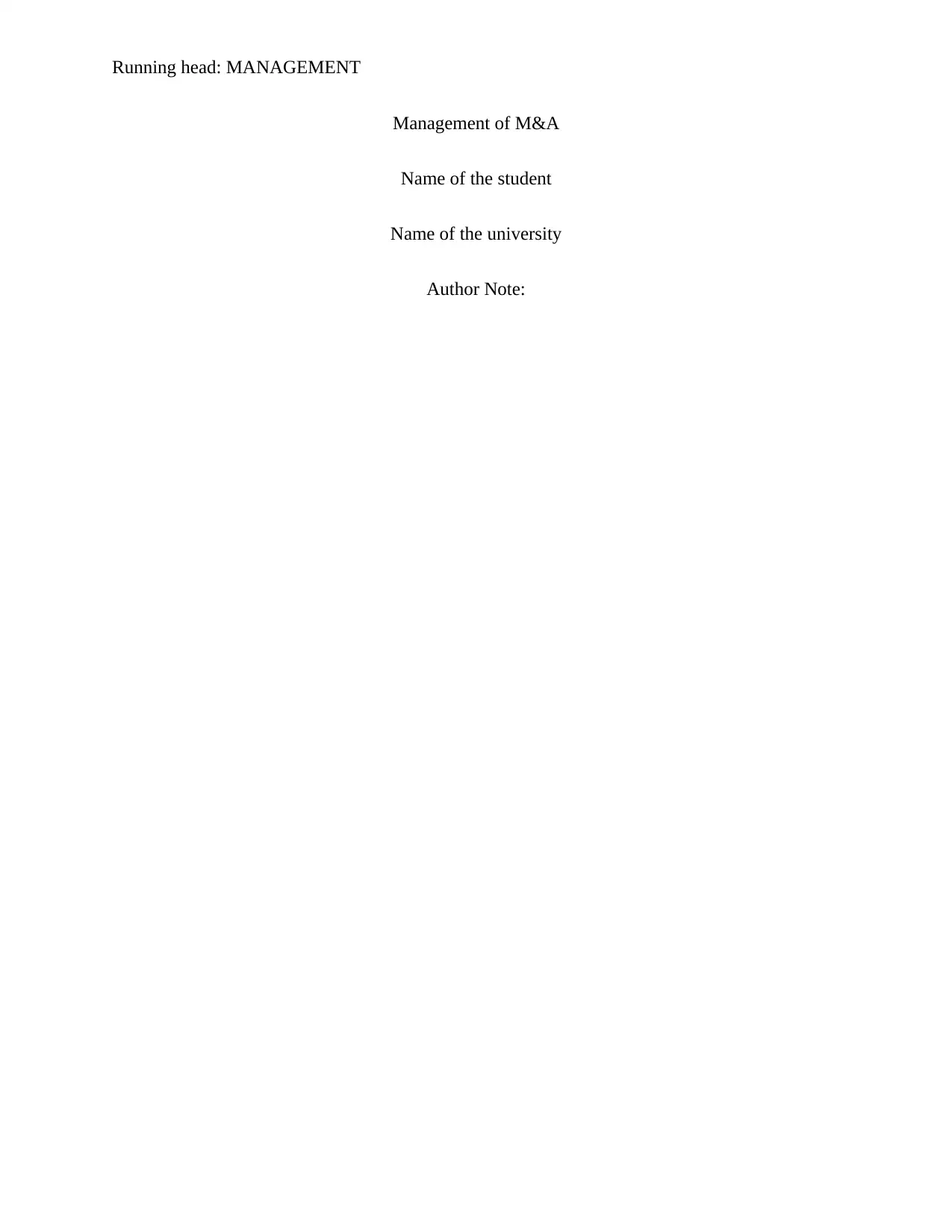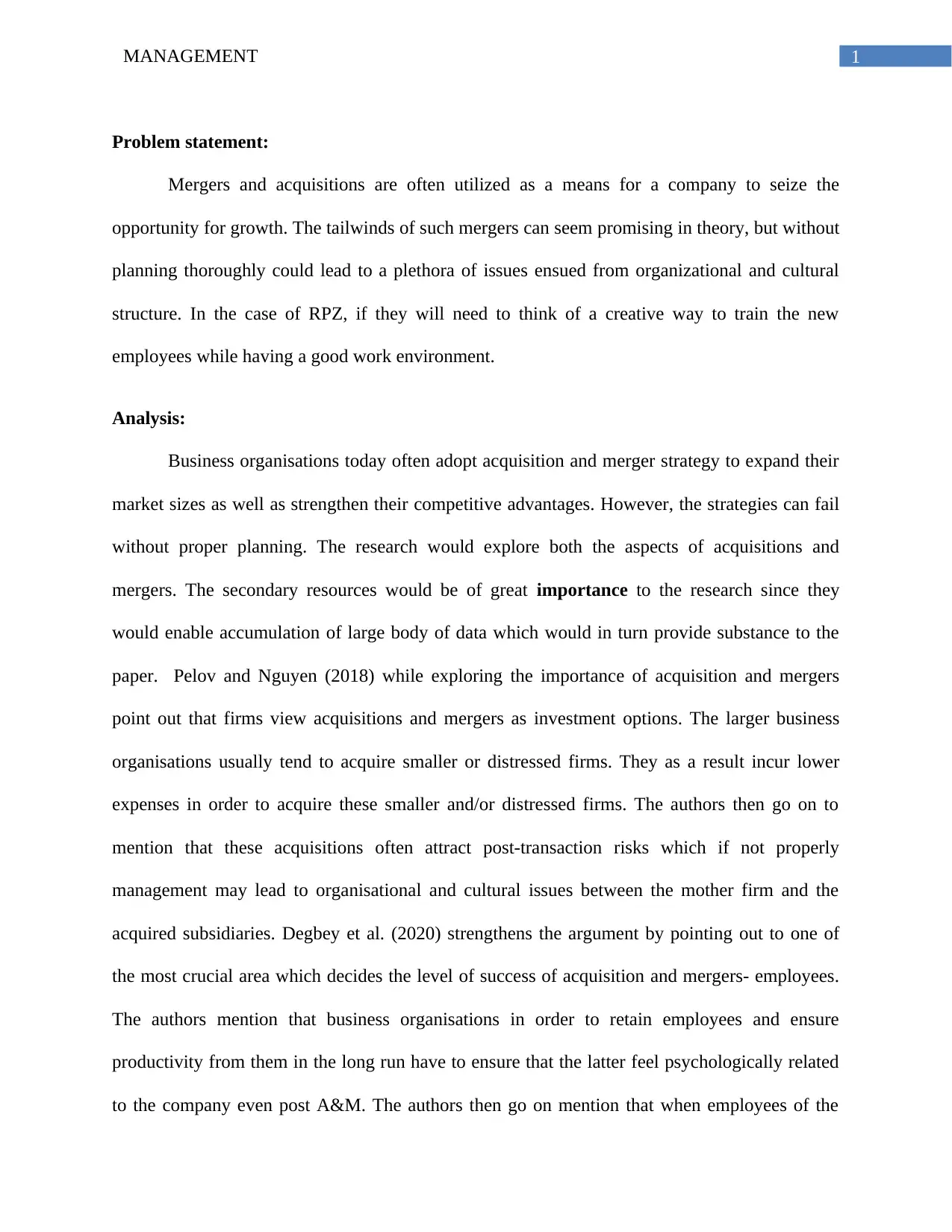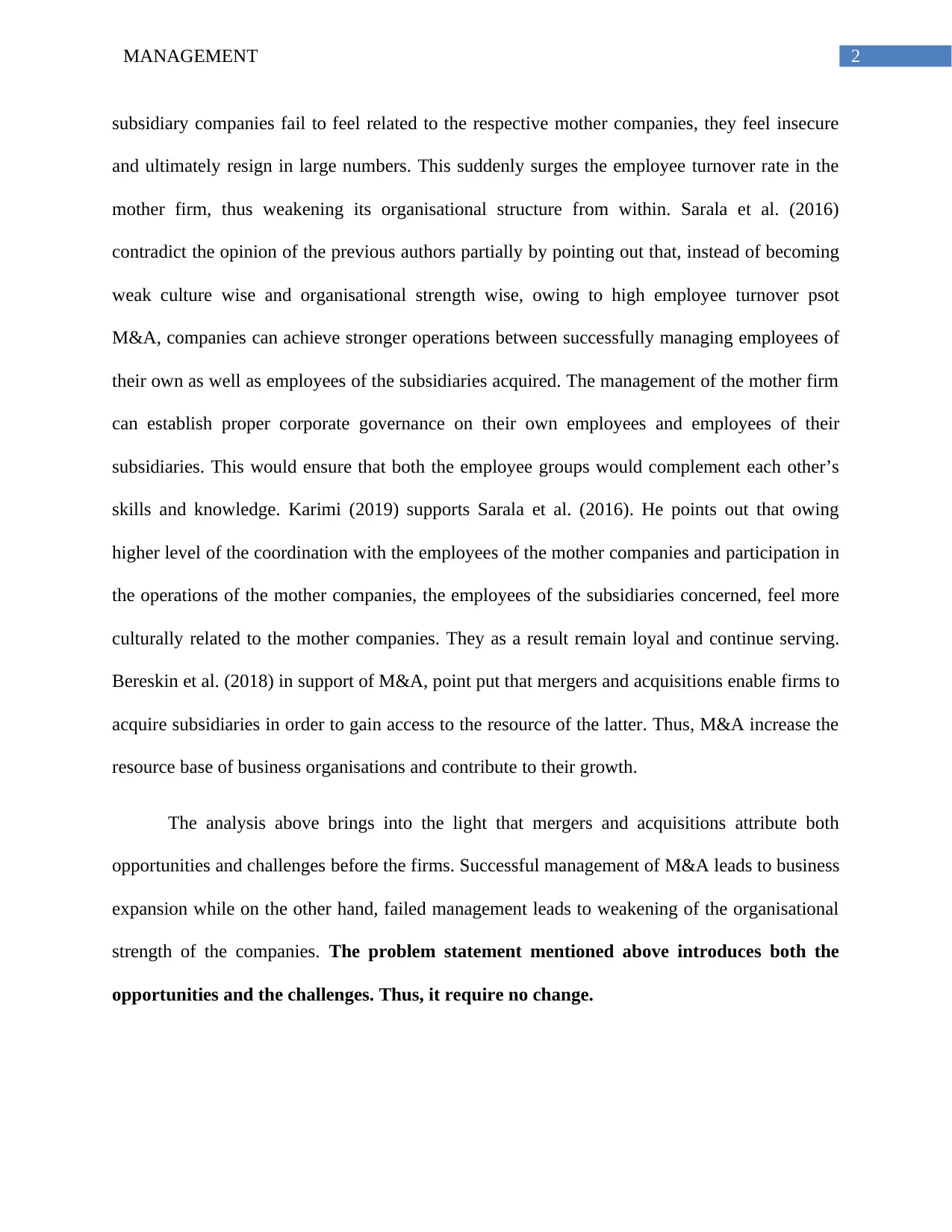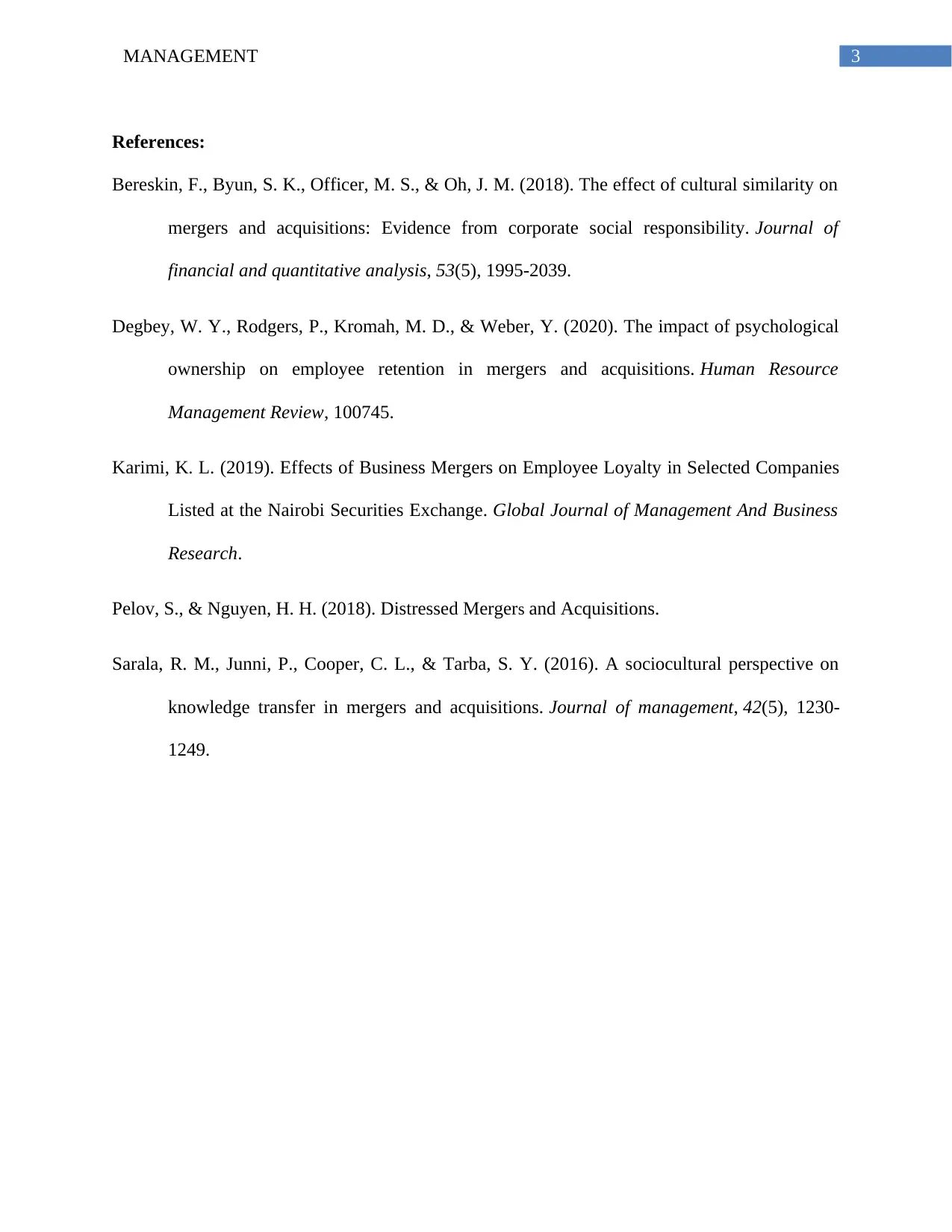Management of Mergers and Acquisitions: A Comprehensive Analysis
VerifiedAdded on 2022/08/16
|4
|880
|23
Report
AI Summary
This report examines the management of mergers and acquisitions (M&A), highlighting both the opportunities for business expansion and the challenges related to organizational and cultural integration. The analysis explores how companies use M&A to grow, focusing on the importance of proper planning to avoid issues such as employee turnover and cultural clashes. The report references several studies that discuss the role of employee retention, corporate governance, and the impact of cultural similarity in the success of M&A. It emphasizes the need for effective management strategies to ensure employees feel connected to the company post-merger, fostering loyalty and contributing to overall business success. The research concludes that successful M&A requires careful consideration of employee relations, organizational structure, and cultural integration to achieve sustainable growth.
1 out of 4











![[object Object]](/_next/static/media/star-bottom.7253800d.svg)